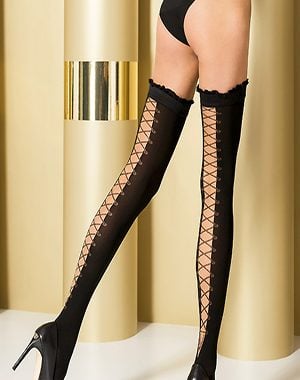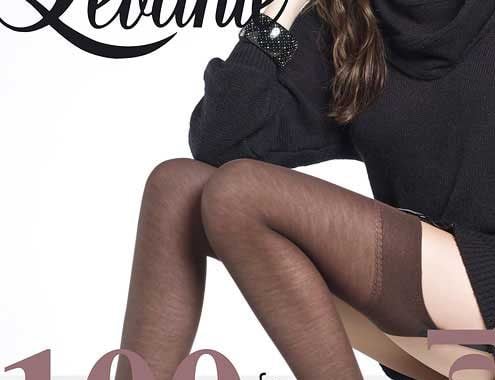UK Tights Pays Tribute To Mary Quant

Mary Quant is a name any fashion lover should know. If you are British, and love clothing, then you have almost certainly know the name. Dame Mary Quant and her contributions to the world of British fashion are innumerable. She was an inventor and pioneer of new types of clothing. Mary Quant was a founding member of new fashion movements. She came to define the vision of the “Swinging Sixties” in the British fashion scene. And she revitalised a Renaissance of the British fashion scene and its influence on the world of style. In the world of music, the Beatles led the “British Invasion” that took America and the world by storm. But in the world of fashion, it was Mary Quant.
Yesterday, on the 13th April 2023, Mary Quant passed away. She died peacefully in her home in Surrey, England. She was 93 years old. We’d like to take a moment to look back on a long and full life of this fashion titan. So let’s take a walk down memory lane, to the best moments and highlights of a remarkable woman’s career.
A Little Personal History Of A Young Mary Quant
Quant was born on 11th February 1930 in Woolwich, in London. She was the daughter of Jack Quant and Mildred Jones. Both her parents, however, were not Londoners or indeed English. They were proud Welshmen, and both came from Welsh mining families. But showing amazing promise in school, Mary’s parents had received scholarships to grammar schools. For those outside of Britain, a grammar school is a prestigious educational institute that caters to the gifted. Not a public school where you can pay to send your children to receive a good education, but a place for the disadvantaged but talented. Later, her parents achieved first-class degrees at Cardiff University. They moved to London later in order to work as schoolteachers.
Mary had a younger brother, John Antony Quant, who became an officer in the Royal Air Force. When she and John were children, they were among the children evacuated to the countryside during the London Blitz. So Mary spent part of her childhood away from her parents, living in the idyllic countryside of Kent.
Her Education Begins
After the war, Quant attended Blackheath High School, back in London. She always had a burning passion for style and clothing. So she decided to study fashion at college. Her parents initially disapproved, and she was finally dissuaded from following her dream. Mary Quant enrolled at the prestigious Goldsmiths’ College in London, one of the finest schools of design and the arts in London. She studied illustration and art education and graduated in 1953. But her degree was close enough to her original passion for Quant to seamlessly move into her real passion.
After finishing her degree, she decided to apprentice to a traditional sartorial business in London. As fashion lovers know, there are plenty of places in London to learn how to make beautiful clothes. Savile Row among the most famous, and Jermyn Street and its own tailors too. She chose Erik Braagaard however, a high-end milliner in Mayfair. Braagaard’s business is located on Brook Street, right next door to the world famous Claridge’s hotel.
Making A Name For Herself
Eventually, Quant started her own boutique in London, on the Kings Road, and named it Bazaar. She initially sold other designer’s clothing and retailed it out of her shop. The bold and unique pieces in her collection started getting more attention and she was featured in Harper’s Bazaar. Because of this attention and her love for bold looks, she decided to begin designing her own work. Initially Mary Quant only worked solo and had a small team of machinists. But by 1966 she was working with a total of 18 manufacturers who made her dresses and tops and hats for widespread distribution.
Quant’s designs were much more risky than the standard at the time. Quant’s designs revolutionised fashion and helped take it out of the drab and practical looks left over from the wartime. The 1940s gave way tot he new optimism of the 1950s and 1960s. And as the 1960s rolled around, she even broke into of our own personal favourite categories, coloured tights.
Quant’s impact did not just come from her unique designs. She still maintained a boutique, and she pioneered the idea of a total shopping experience from this location. It was a custom environment, and she made sure to use music to set the mood, gave her customers drinks, and made a real atmosphere out of the place. She even pioneered window displays, setting up models in quirky poses that is common place today. The crowds would often stop to stare at these eccentric and wacky displays. This environment was unique in clothing at the time, which was scene as a serious affair in London tailoring shops.
Mary Quant, Breaking Onto The International Scene
In interviews, she often said that the response was more than she had hoped for. “Within 10 days, we hardly had a piece of the original merchandise left.” In the late 1950s and early 1960s, Quant was one of only two high-end designers in London that offered these types of clothes for young people. The other was Kiki Byrne. She opened her boutique on the King’s Road in direct competition with Quant, meaning that for a short time, Mary Quant really was the only person pioneering Swinging Sixties fashion in Britain.
In 1966, Quant was named one of the “fashion revolutionaries” in by Women’s Wear Daily, a New York magazine. This was a prestigious honour that put her along side the likes of Edie Sedgwick, Pierre Cardin, Paco Rabanne, and even Yves Saint Laurent.
Mary Quant’s Greatest Invention, The Miniskirt
There is no question what we all best know Mary Quant for. The miniskirt. There is not exactly one inventor of a garment like this, of course. But Mary Quant still boasts the strongest claim as its chief inventor. She was not the first to shorten the skirt, that happened season after season. But she likely made the most significant alterations in length all at the same time. She made this amazing and influential garment a mainstay of our wardrobes. This was, as some may remember, a total scandal at the time. The miniskirt was seen as too daring for the day. Too dramatic and too sexy. But Mary Quant was the type to ignore such criticisms though, and pushed ahead with more and more daring standards.
In Second Place By A Photo Finish, Hotpants!
If any garment captured the swinging ’60s better than the miniskirt, it would have to be hotpants. This means any pair of shorts that are, well, very short. It is hard to believe that these things just did not exist at the time. Before the mighty Mary Quant arrived to create them for us. But before this, showing thighs and even a little peek at the bum cheek was unheard of. Shorts were maybe mid-thigh length at best. Now, the idea of covering only what needs to be covered is common place.
It has also not just affected the fashion world, but was spread into the cultural zeitgeist at large. If you ever saw The Dukes of Hazzard, you will undoubtedly know the denim shorts worn by Daisy. In fact, they are still often called Daisy Dukes to this day. This was all because of Miss Quant and her creativity and impact on people’s imaginations.
Her Impact On Leg Wear
Of course, a word about leg wear in in order. Mary Quant made herself known in every field. Fresses, tops, skirts, pants, hats, outerwear, and much more. But she pioneered coloured tights too. Without her, tights were drab and they were plain. Black or tan or brown, and with a backseam. That was all you could buy during the wartime period, and only in stockings. In the 1960s, Mary Quant pioneered tights as a more convenient form of leg wear. And she did so by making them in bright greens, pinks, yellows and other shades. If it were not for Mary Quant, the world of hosiery would be significantly more lifeless and boring. If you have ever worn a pair of pair of coloured tights, you can thank Miss Quant for that.
A True British Pioneer
There is no one out there that is quite like Mary Quant. She is an icon, and was a truly special woman. UK Tights owes a debt of gratitude to her. She pioneered coloured tights and patterned tights, and inspired so many brands around today. She will surely be missed greatly. Thank you, Mary Quant, for all that you have done for us.
You May Also Like

Everyone Needs Passion In Their Lives
14 May 2021
Five Fabulous Stockings to Rock National Stockings Day 2015
14 October 2015


